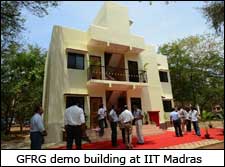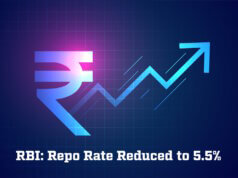The Associated Chambers of Commerce and Industry of India has urged real estate developers to adopt new and low cost technologies for overcoming some of the challenges faced in development of affordable housing.
A few months back, researchers from the civil engineering department at the Indian Institute of Technology – Madras, showcased a technology that they had developed for building rapid, cost-effective mass housing using glass fibre reinforced gypsum panels. A model housing apartment comprising four flats was constructed inside the IIT campus for demonstration purpose. Using the method of construction developed by the researchers at IIT, a two-bedroom apartment of 800 square feet can be constructed at a cost of just Rs. 10 lakh.
India’s urban population has grown at a Compounded Annual Growth Rate of 2.8 percent over 2001-2011, resulting in an increase in the urbanization rate from 27.8 percent to 31.2 percent. Out of India’s 1.21 billion population, 377 million people are urban dwellers.
The Federation of Indian Chambers of Commerce and Industry estimates that by 2050, the country’s cities would witness a net increase of 900 million people. Over 2012-2050, the pace of urbanization is likely to increase at a CAGR of 2.1 percent.
 A report submitted in September 2012 by the Technical Urban Group on urban housing shortage for the period 2012-17 to the Ministry of Housing and Urban Poverty Alleviation, estimates the country’s urban housing shortage at nearly 18.78 million households in 2012. The 10 states that contribute to 14.3 million or 76 percent of urban housing shortage are Uttar Pradesh (over 3 million), Maharashtra (1.97 million), West Bengal (1.33 million), Andhra Pradesh (1.27 million), Tamil Nadu (1.25 million), Bihar (1.19 million), Rajasthan (1.15 million), Madhya Pradesh (1.1 million), Gujarat (0.99 million) and Jharkhand (0.66 million).
A report submitted in September 2012 by the Technical Urban Group on urban housing shortage for the period 2012-17 to the Ministry of Housing and Urban Poverty Alleviation, estimates the country’s urban housing shortage at nearly 18.78 million households in 2012. The 10 states that contribute to 14.3 million or 76 percent of urban housing shortage are Uttar Pradesh (over 3 million), Maharashtra (1.97 million), West Bengal (1.33 million), Andhra Pradesh (1.27 million), Tamil Nadu (1.25 million), Bihar (1.19 million), Rajasthan (1.15 million), Madhya Pradesh (1.1 million), Gujarat (0.99 million) and Jharkhand (0.66 million).
The report by the Technical Urban Group points out that the urban housing shortage is prominent across the economically weaker sections and low income groups which together constitute over 95 percent of the total housing shortage. The shortage amongst the middle income groups and above is estimated at 4.38 percent.
According to a report by KPMG in India and the National Real Estate Development Council, titled ‘Bridging the Urban Housing Shortage in India’, which was released last year, affordable urban housing development continues to be a challenging proposition for real estate developers. Among the constraints faced are unavailability of urban land, delay in approvals from multiple local authorities, rising construction costs, lack of skilled manpower, financing difficulties for LIGs, limited financing avenues for developers, archaic laws and unclear guidelines and disputable tax regime.
Besides urging real estate developers to leverage on new and low cost technologies, Assocham has suggested a number of measures to provide the much needed fillip to affordable housing development in the country. The measures include extending infrastructure status to the sector, a more proactive role of state governments in activating affordable housing schemes where the projects could be jointly developed with builders through Public Private Partnership, policy changes at RBI’s end to accommodate demand for loans in the affordable housing category and development of customized lending models by lending institutions taking into consideration the requirement of buyers.
As per the report by KPMG and NAREDCO, during 2009-12, real estate developers in the country had launched projects in the affordable segment across cities with units priced between Rs. 5 – 10 lakhs.











